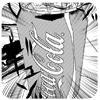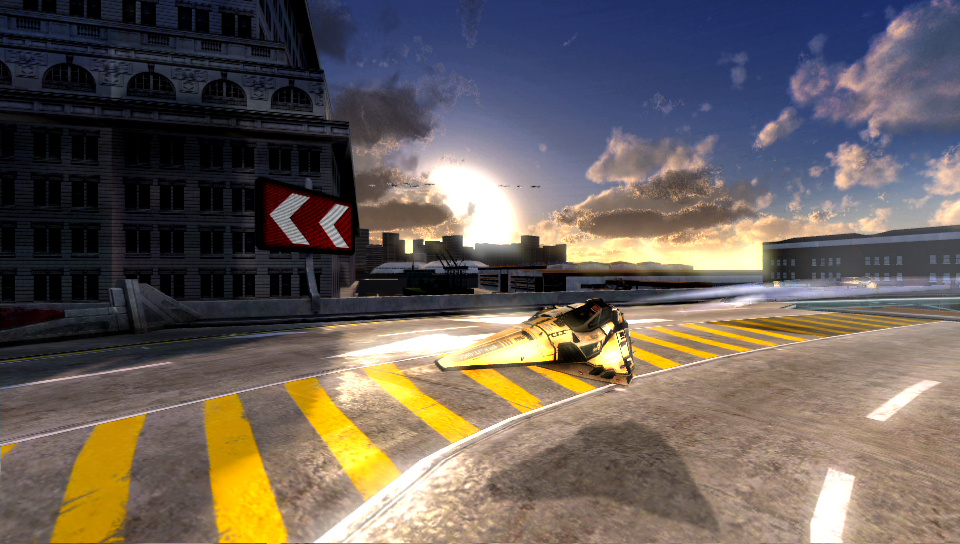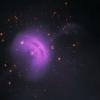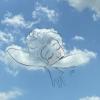Science, it definitely still works bitches.
-
Random nowhere in Russia. Should appease the lefties.Live= sgt pantyfire PSN= pantyfire
-
Because this guy is pretty damn cool
"I spent years thinking Yorke was legit Downs-ish disabled and could only achieve lucidity through song" - Mr B -
Show networks
- @_badhairday_
- Xbox
- Bad Hair Day
- PSN
- Bad-Hair-Day
- Steam
- badhairday247
Send messageHe's pretty damn high too.retroking1981: Fuck this place I'm off to the pub. -
Scientists create fluid with 'negative mass'
Created at Washington State University, the bizarre fluid defies Isaac Newton's Second Law of Motion.
The idea that something can have negative mass is difficult to comprehend. Push it, and instead of moving away from you it will accelerate towards you in apparent defiance of the laws of physics.
To create this negative mass liquid, the researchers used lasers to cool rubidium atoms down to a temperature only slightly higher than absolute zero.
This created something known as a Bose-Einstein condensate - a form of matter in which particles move extremely slowly and behave like waves.
"What's a first here is the exquisite control we have over the nature of this negative mass, without any other complications," said Michael Forbes, an assistant professor of physics and astronomy.
"It provides another environment to study a fundamental phenomenon that is very peculiar."
Source: Phys.org -
GR allows for negative mass, although you have to be slightly careful what we mean when you say negative. When we say negative charge for example, what do we actually mean? Does antimatter fall up, and why?
If you understand symmetry in physics you understand physics deeply, but it's fairly challenging. Even undergrad courses only flirt with the topic. -
So who is a math head here? I stumbled across a presentation of hyperspheres and the poincare conjecture midweek, and it sounds absolutely fascinating and completely beyond my grasp.
Has anyone got any book recommendations that cover it? I've seen one by an author donal o'shea but there's nothing between that and the proceedings of a meeting where the proof was presented."Sometimes it's better to light a flamethrower than curse the darkness." ― Terry Pratchett -
There's a maths thread, fwiw. Not immediately sure of book recommendations.
-
-
Cheers muzzy. Its a question that links to both cosmology and maths but yeah, I'll cross-post in there."Sometimes it's better to light a flamethrower than curse the darkness." ― Terry Pratchett
-
[font=PTSansRegular, Helvetica, Arial, sans-serif][font=PTSansNarrowRegular, Helvetica, Arial, sans-serif]B&Q first UK retailer to introduce total ban on plants grown using neonicotinoids[/font]27 April 2017, by Matthew Appleby, 1 comment
B&Q's flowering plant range from February 2018 will be grown neonicotinoid-free with suppliers such as Coletta & Tyson stopping using the pesticide on plants including lavender.
[/font][font=PTSansRegular, Helvetica, Arial, sans-serif] [/font]
[/font]
[font=PTSansRegular, Helvetica, Arial, sans-serif]B&Q's bedding plants, grown by Coletta & Tyson and Roundstone, are already neonicotinoid-free.
Neonicotinoids imidacloprid, thiacloprid and clothianidin have been linked with bee decline and the EU have already banned them from consumer use.
B&Q launched a Nature of Gardens report this week to give ideas how to make gardens more wildlife friendly and give evidence why that is a good idea.
Head of horticulture Tim Clapp said: "Neonicotinoids are fundamentally not good so we have worked in conjunction with our growers to come up with a plan. We weren't large users anyway and now we have made a strong statement we won't use neonicotinoids at all. It's really important we show leadership on sustainability."
B&Q sustainabilty manager Rachel Bradley said: "To further support pollinators, we are encouraging everyone to do more for wildlife and to that end we will ensure that none of the flowering plants we sell will be grown using any pesticide containing any of the nine neonicotinoids."
He said the issue was on hardy nursery stock rather than bedding and that growers were using biocontrols rather than neonicotinoids to control vine weevil now.
B&Q sells more than one million lavenders a year.
In the US, Lowe's and Home Depot have phased out neonicotinoids after pressure group campaigns and in the UK similar campaigns from 38 Degrees began in 2016.
Consumer products containing clothianidin, thiamethoxam and imidacloprid were banned by the EU in 2013.
Meanwhile, the latest NFU application for an emergency authorisation for neonicotinoid seed treatments has been declined by Defra minister George Eustice.
[/font] -
The Cassini pictures are amazing. Go look them up.
-
https://www.wired.com/2017/05/apple-park-new-silicon-valley-campus/#slide-1
Read it and be amazed. Jobs' eye for detail bordered on insane. I'd love to walk around it. -
Boffins find evidence of strange uranium-producing bacteria lurking underground It's easier to mine than uraninite ore, too

Damn, look at these roll-front deposits! (photo is not of the actual biogeochemists)




2 Jun 2017 at 20:05, Katyanna Quach
Scientists have discovered bizarre evidence in the US state of Wyoming – that bacteria hidden deep within the Earth's crust secrete uranium.
Uranium, the silvery white metal known for its radioactive properties and usage in nuclear power plants, is thought to occur within ore deposits in the form of uraninite. The uranium in this form is usually mined from sandstone "roll-front" deposits.
But the latest findings published in Nature Communications challenge long-held beliefs about the way uranium can be formed. Geologists now believe uranium is produced biologically, in a series of chemical reactions in Earth's crust that take place over millions of years.
A team of biogeochemists has spotted promising signs that living microorganisms can also produce uranium, albeit in a different form than in the mineral uraninite. By analyzing the composition of uranium from 650-foot-deep samples mined in Wyoming – and using synchotron radiation-based spectroscopy and isotope fingerprinting – they found that 89 per cent of the uranium was bound to inorganic carbonate instead of being in uraninite ore.
The deposits match up to a series of biochemical reactions present in dissimilatory metal-reducing bacteria, a class of microbes that oxidize organic matter and produce metals in the process of anaerobic respiration. In other words, the bacteria use uranium instead of oxygen for energy.
"You know you might have a big story when you discover something that will result in people having to rewrite textbooks," said Thomas Borch, co-author of the paper and professor of soil and crop sciences at Colorado State University.
"Our results may introduce a paradigm shift in the way we think about ore genesis and mining – from implications for human health, to restoration practices, to how mining companies calculate how much they can earn from a given site."
The biologically produced uranium can be mined, and is probably easier to mine compared to uraninite ores, since it's more soluble, Borch told The Register. This might be good news for mining companies but its bad news for environmentalists, as it means it could end up contaminating drinking water sources.
The team hopes to investigate if other roll-front deposits in other parts of the world are similar to the one found in Wyoming, to determine how common the process is and if the bacteria today are the same as those found in Earth's crust three million years ago. ® -
Anyone going to New Scientist Live at Excel end of August weekend?
https://live.newscientist.com/whats-on -
Vela wrote:So who is a math head here? I stumbled across a presentation of hyperspheres and the poincare conjecture midweek, and it sounds absolutely fascinating and completely beyond my grasp. Has anyone got any book recommendations that cover it? I've seen one by an author donal o'shea but there's nothing between that and the proceedings of a meeting where the proof was presented.acemuzzy wrote:There's a maths thread, fwiw. Not immediately sure of book recommendations.SpaceGazelle wrote:Dat Einstein guy was a clever cookie wasn't he?
Rightyo.
I've finished reading and mulling over the Donal O'Shea book on the Poincare Conjecture and how it was proven by Grigory Perelman. A very interesting book because it delves into the history of the subject, and the author takes care to describe and define concepts such as manifolds versus shapes, and n-dimensional surfaces. The idea of a closed, simply connected manifold in 3 dimensions is basically what the conjecture was about - namely whether or not the 3-sphere is the only one. Turns out it is.
The book closes with an argument that it is quite possible the universe (the total universe, not just the observable one) is a 3-sphere. But the theory also holds that it is possible for higher dimension geometries in smaller spaces too. It suggests that a 3-sphere, if that's what the universe is, would have measurable and slightly positive curvature. In this scenario, if the universe was small enough you could theoretically see distant supergalactic clusters in one direction, and then again in other directions - assuming the light had time enough to travel that way. But if the universe was extremely large, you might not be able to see that far and to top it off, the curvature you might measure might be extreeeeeeemly slight and appear flat to the limit of measurement.
Lawrence Krauss claims that we have measured, to about 5 decimal places, the curvature of the universe to be roughly zero (i.e. flat). The 3-sphere if we are in one must then be extremely large, or we are not in one. If you take Krauss argument about a zero total energy universe being self-creating, it does present a problem for his philosophy if they measure any amount of global (glomal) curvature, doesn't it?
It's also interesting to see how much of the Poincare conjecture/proof is informed by (or informed) the understanding of space-time. It is solved with the aid of Ricci flow, it forecasts an ever-expanding universe resulting in de Sitter space at infinite time, and it confuses the hell out of me.
Hopefully someone here is familiar with the subject and can clarify anything I've typed."Sometimes it's better to light a flamethrower than curse the darkness." ― Terry Pratchett -
I've been meaning to post this after some guy at work was asking about the Higgs and what mass means. Fields innit?
https://youtu.be/Xo232kyTsO0 -
Nice link. Ta Gaz.
-
Guys, is there a 3d ultra deep field PC screensaver? Like the youtube vid above. -
Not sure but apod is always worth a look for high res images. That's the astronomy picture of the day website. Go to their archive, search for UDF and I wouldn't be surprised if you can find 8k or higher images."Sometimes it's better to light a flamethrower than curse the darkness." ― Terry Pratchett
-
Not 3d probably"Sometimes it's better to light a flamethrower than curse the darkness." ― Terry Pratchett
-
Screensaver?
-
WorKid wrote:Nice link. Ta Gaz.
You're welcome, it's a decent channel and that is just about as good a (brief) explanation as you'll get anywhere. Interestingly, the reason the combined energy of the Universe is probably zero is because gravitational field potential energy is negative and that cancels all the positive energy. So you've seen there is no mass as such, and the Universe is just made up of KE and PE (or maths as I like to call it).
What the video doesn't address is why physicists talk about massless particles (photon, gluon) and massive particles. If mass is just a measure of the combined energy in a system why is there a split categorisation of particles? Well post 1905 it bacame clear that although mass was no longer a thing in itself, yet light travelled as fast as the universe would allow and nearly everything else didn't.
So Peter Higgs proposed a new particle to account for this. Like all the other particles it doesn't actually have mass itself, which Einstein had already pointed out doesn't exist as an actual thing in itself but a collective property of a system (there is no physical "stuff"), but it does stop things going at the speed of light. This newly invented particle interacted with a newly invented field, and it was this Higgs field that slowed all the particles that had this Higgs particle embedded in them. And it's therefore the massless Higgs particle that accounts for mass. It should be called the slower speed limit particle but it isn't. -
Actually it was called The God Particle which is even more annoying.
-
Vela wrote:So who is a math head here? I stumbled across a presentation of hyperspheres and the poincare conjecture midweek, and it sounds absolutely fascinating and completely beyond my grasp. Has anyone got any book recommendations that cover it? I've seen one by an author donal o'shea but there's nothing between that and the proceedings of a meeting where the proof was presented.There's a maths thread, fwiw. Not immediately sure of book recommendations.
Rightyo. I've finished reading and mulling over the Donal O'Shea book on the Poincare Conjecture and how it was proven by Grigory Perelman. A very interesting book because it delves into the history of the subject, and the author takes care to describe and define concepts such as manifolds versus shapes, and n-dimensional surfaces. The idea of a closed, simply connected manifold in 3 dimensions is basically what the conjecture was about - namely whether or not the 3-sphere is the only one. Turns out it is. The book closes with an argument that it is quite possible the universe (the total universe, not just the observable one) is a 3-sphere. But the theory also holds that it is possible for higher dimension geometries in smaller spaces too. It suggests that a 3-sphere, if that's what the universe is, would have measurable and slightly positive curvature. In this scenario, if the universe was small enough you could theoretically see distant supergalactic clusters in one direction, and then again in other directions - assuming the light had time enough to travel that way. But if the universe was extremely large, you might not be able to see that far and to top it off, the curvature you might measure might be extreeeeeeemly slight and appear flat to the limit of measurement. Lawrence Krauss claims that we have measured, to about 5 decimal places, the curvature of the universe to be roughly zero (i.e. flat). The 3-sphere if we are in one must then be extremely large, or we are not in one. If you take Krauss argument about a zero total energy universe being self-creating, it does present a problem for his philosophy if they measure any amount of global (glomal) curvature, doesn't it? It's also interesting to see how much of the Poincare conjecture/proof is informed by (or informed) the understanding of space-time. It is solved with the aid of Ricci flow, it forecasts an ever-expanding universe resulting in de Sitter space at infinite time, and it confuses the hell out of me. Hopefully someone here is familiar with the subject and can clarify anything I've typed.Dat Einstein guy was a clever cookie wasn't he?
Blimey. I'm not really sure what you're on about tbh. Topology is a thing, maybe the only thing to solve the equations. Dimensions are just maths, so you expand the matrices until the maths works out and there you go. It's all maths.
As for Klauss, he's trying to combine QM and GR, which everyone else is also doing because the maths needs work but when it does it's a provable thing. A Universe from nothing is a great book btw. QM allows borrowing energy at the cost of really small time frames - virtual particles, and they appear and vanish all the time. It allows the Universe to start by briefly popping back in time once it was underway to get it underway by borrowing the stuff it has once the thing was in progress. As long as the combined energies remain at zero you can have infinite universes popping off all the time.
The best way to think about the start of the universe is to imagine a split between positive and negative energy. It still sums to fuck all but there is a difference in the way it behaves "after" the split, which is to say it starts behaving mathematically with non-zero values. Then imagine an infinite amount of universes doing the same thing at collective infinite speed, then realise time doesn't exist in any true mathematical sense which means it probably doesn't exist at all, then play Splatoon for a bit and get drunk. -
Been enjoying a few of the PBS vids today. One on Energy as Mass really blew my mind*
A watch that's stopped has less mass than an identical watch that's spinning. Woah.
* it also meant I've had that Big Audio Dynamite song in my head all day. -
@SpaceGazelle
I'm familiar with the mathematical concept of dimensions, it's visualising the concept of projections that my mind struggles with (in > 3d).
I read A Universe from Nothing back when it was published. The book was fantastic to read but like anything, measurement is important. The measurement of the curvature of the universe is zero at the instrumental limit, but still slightly positive. Any non-flat value does put Krauss' central premise (self-creating) at risk, doesn't it? [More accurately, the divergence from 1 is a gap that deists will gleefully seek to fill even if the measurement isn't absolute]. The hypersphere, meanwhile, is a purely mathematical object and a universe with mass will be different.
I like the idea of a fractal multiverse. But you can't measure it or expect reality to conform to aesthetic preference."Sometimes it's better to light a flamethrower than curse the darkness." ― Terry Pratchett
Howdy, Stranger!
It looks like you're new here. If you want to get involved, click one of these buttons!
Categories
- All Discussions2,715
- Games1,879
- Off topic836











